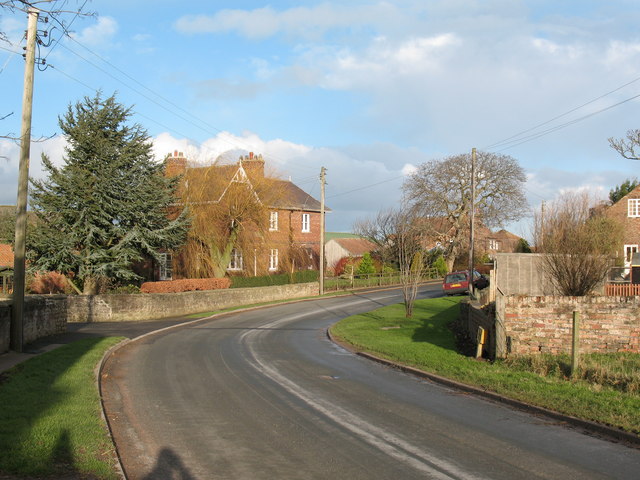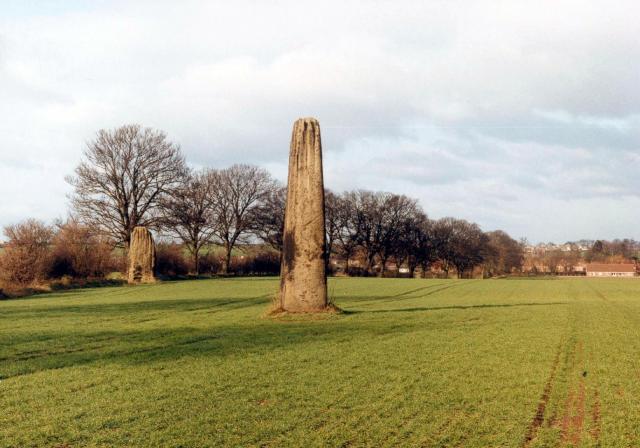|
Norton-le-Clay
Norton-le-Clay is a village and civil parish in the Harrogate district of North Yorkshire, England. It is situated near the A1(M) motorway and north-west of Boroughbridge. It is one of the Thankful Villages Thankful Villages (also known as Blessed Villages; ) are settlements in England and Wales from which all their members of the armed forces survived World War I. The term Thankful Village was popularised by the writer Arthur Mee in the 1930s; in ' ... that suffered no fatalities during the Great War of 1914 to 1918. References External links Villages in North Yorkshire Civil parishes in North Yorkshire {{harrogate-geo-stub ... [...More Info...] [...Related Items...] OR: [Wikipedia] [Google] [Baidu] |
Thankful Villages
Thankful Villages (also known as Blessed Villages; ) are settlements in England and Wales from which all their members of the armed forces survived World War I. The term Thankful Village was popularised by the writer Arthur Mee in the 1930s; in ''Enchanted Land'' (1936), the introductory volume to ''The King's England'' series of guides, he wrote that a Thankful Village was one which had lost no men in the war because all those who left to serve came home again. His initial list identified 32 villages. There are tens of thousands of villages and towns in the United Kingdom. In an October 2013 update, researchers identified 53 civil parishes in England and Wales from which all serving personnel returned. There are no Thankful Villages identified in Scotland or Ireland yet (all of Ireland was then part of the United Kingdom). Fourteen of the English and Welsh villages are considered "doubly thankful", in that they also lost no service personnel during World War II. These are marke ... [...More Info...] [...Related Items...] OR: [Wikipedia] [Google] [Baidu] |
Norton Le Clay
Norton may refer to: Places Norton, meaning 'north settlement' in Old English, is a common place name. Places named Norton include: Canada *Rural Municipality of Norton No. 69, Saskatchewan *Norton Parish, New Brunswick **Norton, New Brunswick, a village United Kingdom England *Norton, Runcorn, Cheshire, a district * Norton, South Hams, a location in Devon * Norton, Torridge, a location in Devon *Norton, County Durham, an area of Stockton-on-Tees * Norton, East Sussex, a location * Norton, Gloucestershire, a civil parish * Norton, Hampshire, a hamlet near Sutton Scotney *Norton, Herefordshire, a civil parish near Bromyard *Norton, Hertfordshire, a village *Norton, Isle of Wight, a location *Norton, Kent *Norton, Northamptonshire, a village * Norton, Nottinghamshire, a village * Norton, Culmington, a location in Shropshire * Norton, Stockton, Shropshire, a location in Shropshire * Norton, Wroxeter and Uppington, a location in Shropshire * Norton, Somerset, a location * Norton, Donca ... [...More Info...] [...Related Items...] OR: [Wikipedia] [Google] [Baidu] |
2011 Census For England And Wales
A census of the population of the United Kingdom is taken every ten years. The 2011 census was held in all countries of the UK on 27 March 2011. It was the first UK census which could be completed online via the Internet. The Office for National Statistics (ONS) is responsible for the census in England and Wales, the General Register Office for Scotland (GROS) is responsible for the census in Scotland, and the Northern Ireland Statistics and Research Agency (NISRA) is responsible for the census in Northern Ireland. The Office for National Statistics is the executive office of the UK Statistics Authority, a non-ministerial department formed in 2008 and which reports directly to Parliament. ONS is the UK Government's single largest statistical producer of independent statistics on the UK's economy and society, used to assist the planning and allocation of resources, policy-making and decision-making. ONS designs, manages and runs the census in England and Wales. In its capacity as ... [...More Info...] [...Related Items...] OR: [Wikipedia] [Google] [Baidu] |
Harrogate (borough)
The Borough of Harrogate is a local government district with borough status in North Yorkshire, England. Its population at the census of 2011 was 157,869. Its council is based in the town of Harrogate, but it also includes surrounding towns and villages. This includes the cathedral city of Ripon and almost all of the Nidderdale Area of Outstanding Natural Beauty. The district was formed on 1 April 1974, under the Local Government Act 1972, as a merger of the Masham and Wath rural districts, and part of Thirsk, from the North Riding of Yorkshire, along with the boroughs of Harrogate and the city of Ripon, the Knaresborough urban district, Nidderdale Rural District, Ripon and Pateley Bridge Rural District, part of Wetherby Rural District and part of Wharfedale Rural District, all in the West Riding of Yorkshire. The district is part of the Leeds City Region, and borders seven other areas; the Craven, Richmondshire, Hambleton, Selby and York districts in North Yorkshire ... [...More Info...] [...Related Items...] OR: [Wikipedia] [Google] [Baidu] |
North Yorkshire
North Yorkshire is the largest ceremonial counties of England, ceremonial county (lieutenancy area) in England, covering an area of . Around 40% of the county is covered by National parks of the United Kingdom, national parks, including most of the Yorkshire Dales and the North York Moors. It is one of four counties in England to hold the name Yorkshire; the three other counties are the East Riding of Yorkshire, South Yorkshire and West Yorkshire. North Yorkshire may also refer to a non-metropolitan county, which covers most of the ceremonial county's area () and population (a mid-2016 estimate by the Office for National Statistics, ONS of 602,300), and is administered by North Yorkshire County Council. The non-metropolitan county does not include four areas of the ceremonial county: the City of York, Middlesbrough, Redcar and Cleveland and the southern part of the Borough of Stockton-on-Tees, which are all administered by Unitary authorities of England, unitary authorities. ... [...More Info...] [...Related Items...] OR: [Wikipedia] [Google] [Baidu] |
Civil Parish
In England, a civil parish is a type of administrative parish used for local government. It is a territorial designation which is the lowest tier of local government below districts and counties, or their combined form, the unitary authority. Civil parishes can trace their origin to the ancient system of ecclesiastical parishes, which historically played a role in both secular and religious administration. Civil and religious parishes were formally differentiated in the 19th century and are now entirely separate. Civil parishes in their modern form came into being through the Local Government Act 1894, which established elected parish councils to take on the secular functions of the parish vestry. A civil parish can range in size from a sparsely populated rural area with fewer than a hundred inhabitants, to a large town with a population in the tens of thousands. This scope is similar to that of municipalities in Continental Europe, such as the communes of France. Howev ... [...More Info...] [...Related Items...] OR: [Wikipedia] [Google] [Baidu] |
A1 Road (Great Britain)
The A1 is the longest numbered road in the UK, at . It connects London, the capital of England, with Edinburgh, the capital of Scotland. It passes through or near North London, Hatfield, Welwyn Garden City, Stevenage, Baldock, Letchworth Garden City, Biggleswade, St Neots, Huntingdon, Peterborough, Stamford, Grantham, Newark-on-Trent, Retford, Doncaster, York, Pontefract, Wetherby, Ripon, Darlington, Durham, Sunderland, Gateshead, Newcastle upon Tyne, Morpeth, Alnwick and Berwick-upon-Tweed. It was designated by the Ministry of Transport in 1921, and for much of its route it followed various branches of the historic Great North Road, the main deviation being between Boroughbridge and Darlington. The course of the A1 has changed where towns or villages have been bypassed, and where new alignments have taken a slightly different route. Several sections of the route have been upgraded to motorway standard and designated A1(M). Between the M25 (near London) and the A72 ... [...More Info...] [...Related Items...] OR: [Wikipedia] [Google] [Baidu] |
Boroughbridge
Boroughbridge () is a town and civil parish in the Harrogate district of North Yorkshire, England. Historically part of the West Riding of Yorkshire, it is north-west of the county town of York. Until a bypass was built the town lay on the main A1 road from London to Edinburgh, which crosses the River Ure here. The civil parish includes the villages of Aldborough and Minskip. History Toponymy The origin of the name 'Boroughbridge' lies in its location relative to Aldborough, the principal settlement during the Roman period and known as Isurium Brigantum. Dere Street, the Roman road heading north from York, originally crossed the River Ure just north of Aldborough, but at an unknown date the road was diverted to cross the river at Boroughbridge. The place was first mentioned in 1155 in the Latin form ''pontem de Burgo'' and by 1298 in the English form ''Burghbrig'' ('the bridge near Burgh or Aldborough'). A new town grew up at the bridge and the Old Town became kn ... [...More Info...] [...Related Items...] OR: [Wikipedia] [Google] [Baidu] |
Villages In North Yorkshire
A village is a clustered human settlement or community, larger than a hamlet but smaller than a town (although the word is often used to describe both hamlets and smaller towns), with a population typically ranging from a few hundred to a few thousand. Though villages are often located in rural areas, the term urban village is also applied to certain urban neighborhoods. Villages are normally permanent, with fixed dwellings; however, transient villages can occur. Further, the dwellings of a village are fairly close to one another, not scattered broadly over the landscape, as a dispersed settlement. In the past, villages were a usual form of community for societies that practice subsistence agriculture, and also for some non-agricultural societies. In Great Britain, a hamlet earned the right to be called a village when it built a church. [...More Info...] [...Related Items...] OR: [Wikipedia] [Google] [Baidu] |




